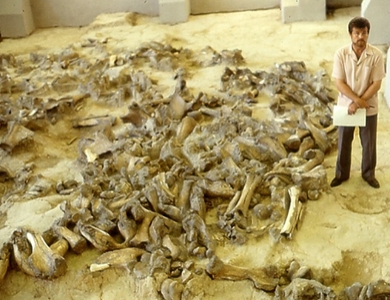Lezing
Looking inside the tent: questions for deep history
- Datum
- dinsdag 7 oktober 2025
- Tijd
- Bezoekadres
-
Van Steenis
Einsteinweg 2
2333 CC Leiden - Zaal
- Reuvens Hall (main hall Van Steenis) / online

Abstract
Ethnoarchaeological studies of small circular tents and houses provide a wealth of information on their spatial organisation. In this seminar I explore the widespread finding that these are also highly gendered spaces. This applies to hunter-gatherers as well as pastoralists and farmers and to both moveable tents and permanent structures. Daphne Spain makes the link between these gendered spaces and male control over valued cultural knowledge in the form of ceremonial paraphernalia and ritual.
This raises the question of WHEN and WHERE the spatial habitus of gendered spaces arose during deep history. The storage of food and the keeping of valued paraphernalia provide important chronological evidence as does the earliest appearance of credible dwellings. The timing of the first internal hearths is also critical. On this evidence males began to control cultural resources through gendered spaces after 40,000 BP (WHEN) in communities who lived predominantly above 35oN (WHERE) and stored food in containers. This fundamental change in hominin socioecology came after the appearance of Homo sapiens and well before agriculture.
The Faculty Lecture will be followed by drinks.
